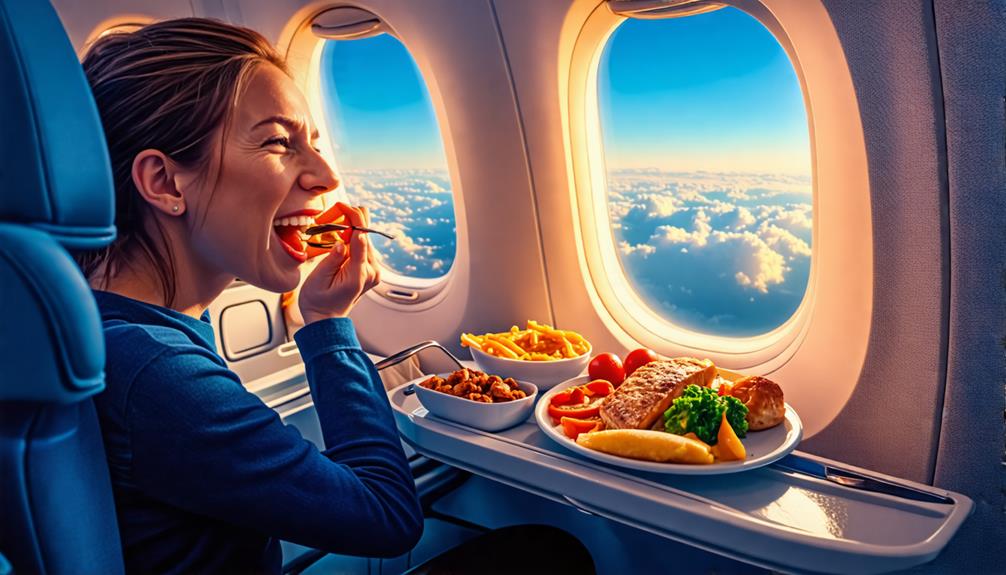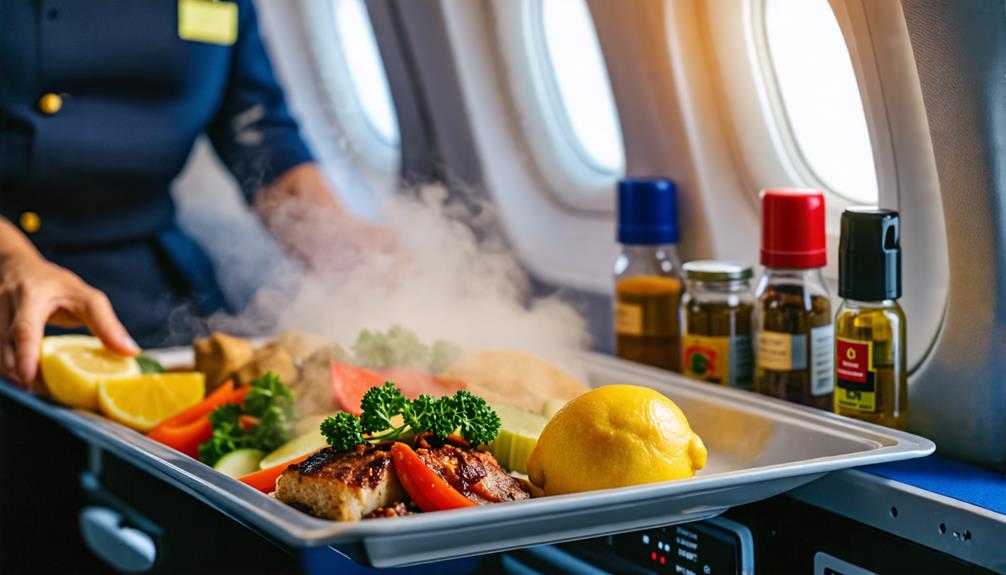You've probably noticed that airplane food doesn't quite taste the same as what you're used to on the ground. It's not just your imagination playing tricks on you. The unique conditions inside an aircraft cabin at high altitudes considerably impact your taste perception. From reduced sensitivity to certain flavors to the effects of low air pressure and humidity on your sense of smell, several factors contribute to this phenomenon. Airlines are well aware of this challenge and have developed strategies to counteract it. But what exactly happens to your taste buds at 30,000 feet, and how do airlines adapt their culinary offerings?
Key Takeaways
- Taste sensitivity decreases by about 30% at high altitudes, affecting flavors in airline meals.
- Low cabin humidity of around 12% dries nasal passages, impairing smell and taste perception.
- Reduced air pressure in the cabin further diminishes the ability to taste and smell food.
- Sweet and salty flavors are particularly affected by the altitude and cabin conditions.
Taste at 30,000 Feet

At 30,000 feet, your taste buds aren't performing at their peak. When you're cruising at altitude, your sensitivity to taste decreases by about 30%, with sweet and salty flavors taking the biggest hit. This is due to lower air pressure and reduced humidity in the cabin, which affects your sense of smell—a vital component of taste perception.
The cabin's dry environment, with humidity often dropping to 12%, dries out your nasal passages, further impairing your ability to smell and taste. As a result, airline food can taste blander than it would on the ground.
To compensate, airlines often over-season their meals, adding 20-30% more salt and 20% more sugar than typical ground-level dishes.
Curiously, bitter, sour, and spicy flavors remain more stable in-flight, while umami-rich ingredients can help enhance the overall taste experience.
Airline Culinary Challenges
Airlines face a unique set of culinary hurdles when preparing meals for passengers at 30,000 feet. The low air pressure and extremely dry conditions inside the cabin affect your sense of taste and smell, dulling your taste buds. To combat this, catering teams must adjust recipes, often adding more spices to enhance flavor.
However, their efforts are complicated by limited cooking facilities at cruising altitude, restricting the types of dishes they can effectively prepare. You'll find that airplane food is often pre-cooked and reheated on board, which can lead to overcooking and a decline in quality.
The logistics of transporting meals to the aircraft also present challenges, as food must withstand extended periods in trays before serving. Special meal requests further complicate the process, affecting overall quality and service speed.
These catering challenges contribute to the unique experience of dining in the air.
Enhancing In-Flight Flavors

To combat the challenges of in-flight dining, airlines are employing innovative techniques to enhance the flavors of meals served at high altitudes. Your sense of taste is dulled in the pressurized cabin, affecting how food tastes.
To counteract this, airlines are over-salting meals by 20% and using intense spices to boost flavor. They're also focusing on umami-rich ingredients like mushrooms and seaweed, which maintain their taste at altitude.
You might notice more ginger and cardamom in your dishes, as these spices help improve your perception of taste. Research has shown that tomato juice is particularly popular among passengers due to its stable umami flavor.
Conclusion
You've learned why your in-flight meal doesn't taste quite right. It's not just your imagination; the high altitude really does affect your taste buds.
Airlines face unique challenges in satisfying passengers' palates at 30,000 feet. But they're not giving up.
They're adapting recipes and using flavor-enhancing techniques to make your meals more enjoyable.
Next time you fly, you'll have a new appreciation for the science behind your airplane food.

Leave a Reply